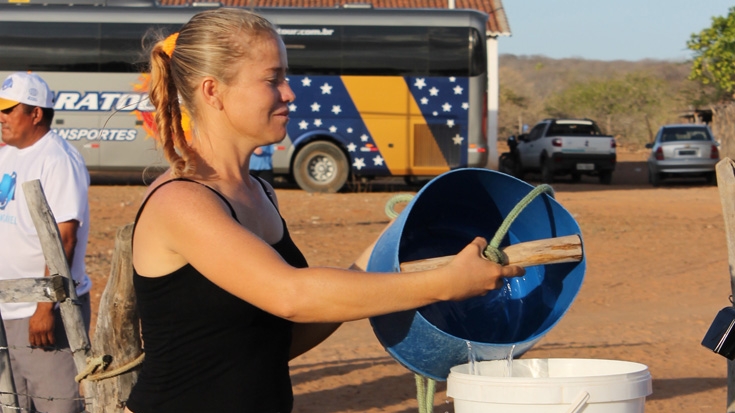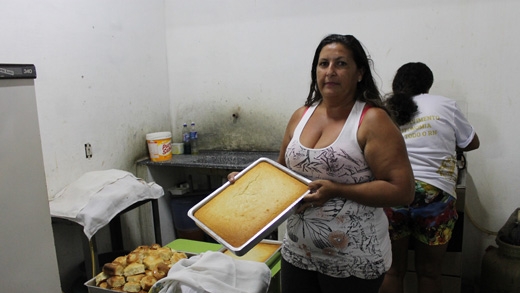Twice a week, María Dilvânia and seven other members of the Caraúbas women’s association in Rio Grande do Norte, in Brazil’s northeast, meet to bake sweets. None of their recipes requires water. “We’ve substituted it with fruit pulp or milk,” she says, proudly.
On a normal day, in the small kitchen they share, the women make 25 different types of cakes, bread and other sweets of coconut, cassava and other flavors, which they sell to neighbors.
Recently, however, it has become more difficult to maintain production levels. For three years now, this semi-arid rural settlement has been in a drought and there is not enough rain to fill household tanks. What is worse, there is no water source other than that the army delivers weekly, which means that Caraúbas women are forced to make increasingly difficult decisions.
"Water is necessary for washing cups as well as for the work to enlarge our kitchen. We are saving it so there will be enough for the house, the family and the flock,” said Dilvânia. Like her neighbors, she leaves home early every day to fill up the 10 water cans given to each family.
If there is no water, the women cannot bake more cake and the women’s association cannot increase its earnings. Families end up depending almost exclusively on the payment from the Bolsa Familia Program, harvest insurance (which protects farmers against crop losses) and retirement funds, three of the main social benefits provided by the Brazilian government.
Grey water
The plight of the Caraúbas bakers is just one example of the challenges facing 36 million people in Latin America and another 748 million around the world. Water shortages mean that every day, people have to choose between cooking and washing dishes, or between bathing and washing clothes.
With climate change, the lack of rain – and supply of water – tends to worsen in the driest areas of the globe. “Northeast Brazil is particularly impacted by El Niño-related droughts; these may become more frequent in a 4°C world,” according to the World Bank report Turn Down the Heat, Confronting the New Climate Normal.
With so many limitations, any water supply project must ensure that people use the water network as efficiently as possible.


